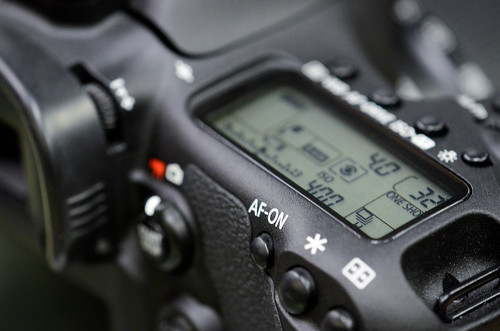When I got my first dSLR camera, I went through the manual and tried to absorb how and why to use all the buttons, controls, and menu items. I was about to head off to Peru for three months and I wanted to make sure I was going to be able to use it properly and get the most out of it right from the start.
For some reason it seemed odd to me that when you pressed the shutter button half-way both the focus AND the exposure were locked in. I had never used an auto-focus SLR before (I went from a Canon AE-1 to a digital point and shoot and missed the whole EOS film SLR era) and always thought of focusing and setting the exposure as two separate acts. Based on my experience with a digital point and shoot, I knew I often focused on the subject with the static middle square (this was several years ago, before face detection and moving auto-focus areas) and then recomposed to take the final shot. With a dSLR, I thought to myself, wouldn’t the exposure change between the framing where I locked in the focus and exposure, and the final framing? Even if using the other focus points of the dSLR and not just the center focus point, I found that my subjects rarely sat right under a focus point and I was often recomposing in order to get the composition I wanted.
I asked a few dSLR users about this, and they looked at me as if I had a Rocket Blower growing out of my head. They didn’t seen to encounter or consider this problem. So I dug into the manual and the very helpful David Busch digital SLR guide and discovered I could overcome this issue with exposure lock. Indeed, this was a real issue that was addressed by dSLR controls, and I wasn’t out of my mind!

The Exposure Lock (*) Button and AF-ON Button of the Canon 7D
There are typically a few different ways to separate exposure lock and focus lock with current dSLR camera. As described above, you can use the exposure lock button to first lock exposure, and then deal with focusing. With a Canon this is done by pressing the button marked “*”. With a Nikon, you can set the AE-L/AF-L button for auto exposure lock (hence AE-L). But since Nikons by default don’t typically lock exposure with a half-press of the shutter button, you really don’t have to worry about it for the same reasons that you do with a Canon (such as when you are recomposing a shot, since the Nikon only locks focus and not exposure with a shutter button half-press, and then determines exposure when the shot is taken, exposure should be correct).
For a Canon you can also set it so that the half-press of the shutter button will lock exposure but not focus, and then use the AF-ON button to lock focus (the T3i does not have this button, thus it is done differently). This is one method of what is called back-button focusing. This can also be done with a Nikon using the AE-L/AF-L button for auto focus lock (hence AF-L). You typically have to dig into the custom function settings on any of the cameras to change these settings and button functions. The terminology can be confusing, so you may want to have a look at any of my e-book user’s guides which all discuss how to accomplish exposure lock and focus lock with the specific cameras. So far I have guides for the Canon 60D and Rebel T3i, and Nikon D5100 and D7000. You can learn more about them all here on my Full Stop e-book website.
For example with the Canon 60D, I explain how you can go into the menus and set the Shutter Button to Metering+AF Start and the AF-ON Button to AF Stop. This setup will allow you to use the camera as you always have, in the default manner of the Shutter Button locking focus and exposure when pressed halfway. The “*” button functions as before, locking exposure at any time when pressed. But this also gives you the option of locking focus independent of exposure metering. It is the best of both worlds.
Learning to use back-button focus and even exposure lock can be awkward at first, and you may not fully understand why it is necessary. But I highly recommend starting to experiment with it, then hopefully getting in the habit of using it all the time – especially if you shoot a lot of action scenes or situations where you are rapidly taking lots of photos (perhaps a wedding and reception). You may soon find it indispensable and wonder how you once managed without it!
Canon has an article about back-button focusing which explains all the various options here:
http://www.usa.canon.com/dlc/controller?act=GetArticleAct&articleID=2286
It is not specific to any camera, so you may have to determine how to implement it on your camera.

